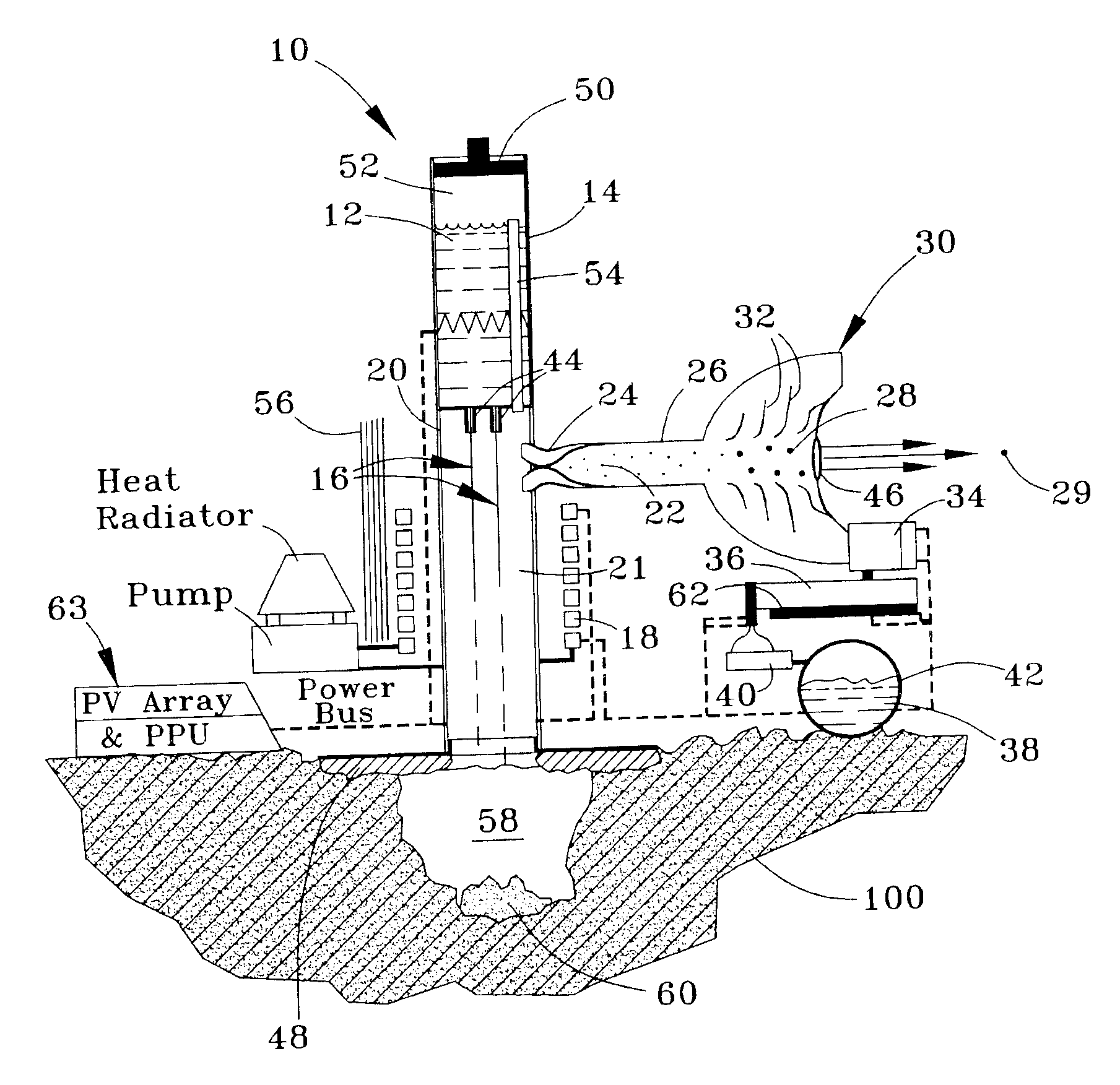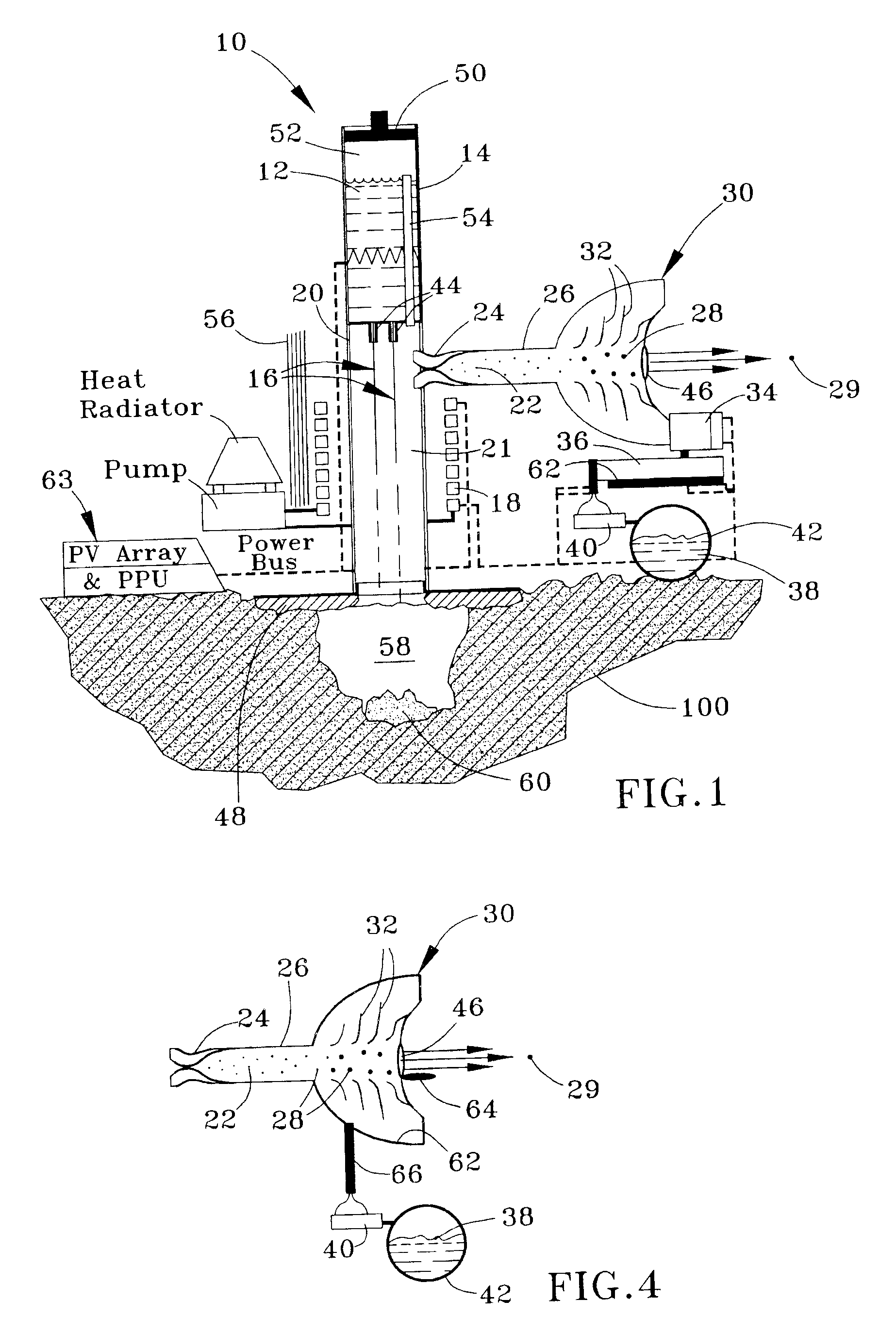Oxygen extraction apparatus and process
a technology of oxygen extraction apparatus and process, which is applied in the direction of oxygen/ozone/oxide/hydroxide, liquid degasification, separation processes, etc., can solve the problems of difficult or impossible construction of long-lived components, difficult placement of electrode materials, and unclear efficiency, convenience and weight leverage performance metrics needed for profitabl
- Summary
- Abstract
- Description
- Claims
- Application Information
AI Technical Summary
Benefits of technology
Problems solved by technology
Method used
Image
Examples
Embodiment Construction
[0018]FIG. 1 schematically represents an ISRU facility 10 capable of oxygen extraction in low-gravity and microgravity environments. The facility 10 may be referred to as a supersonic dust roaster (SDR), in the sense that it is capable of roasting oxygen from regolith, such as from the lunar soil. The facility 10 is depicted as being located on the lunar surface 100, and will be discussed as such, though it should be understood that the facility could be located in a variety of other low-gravity and microgravity environments, such as another planetoid, in orbit, alongside an asteroid, etc.
[0019]The facility 10 applies certain properties of compressible multi-phase supersonic flow to a mineralic vapor. Mineral vapors of about 100,000 Pa typically require temperatures on the order of about 3000 K, and achieving such temperatures within a highly-oxidizing environment precludes containment in almost all known refractory materials. To avoid this limitation, the facility 10 melts a supply...
PUM
| Property | Measurement | Unit |
|---|---|---|
| temperatures | aaaaa | aaaaa |
| temperature | aaaaa | aaaaa |
| pressures | aaaaa | aaaaa |
Abstract
Description
Claims
Application Information
 Login to View More
Login to View More - R&D
- Intellectual Property
- Life Sciences
- Materials
- Tech Scout
- Unparalleled Data Quality
- Higher Quality Content
- 60% Fewer Hallucinations
Browse by: Latest US Patents, China's latest patents, Technical Efficacy Thesaurus, Application Domain, Technology Topic, Popular Technical Reports.
© 2025 PatSnap. All rights reserved.Legal|Privacy policy|Modern Slavery Act Transparency Statement|Sitemap|About US| Contact US: help@patsnap.com



